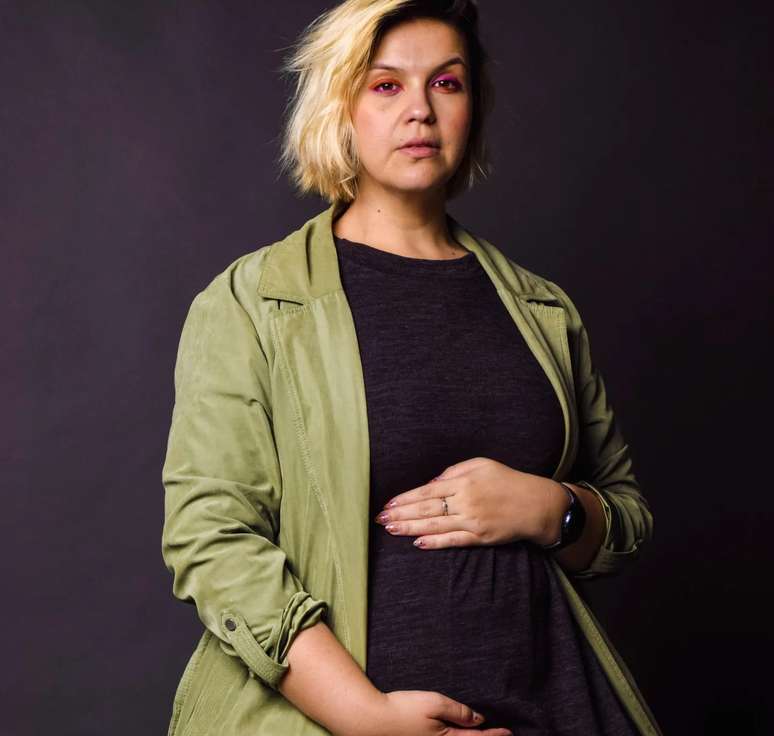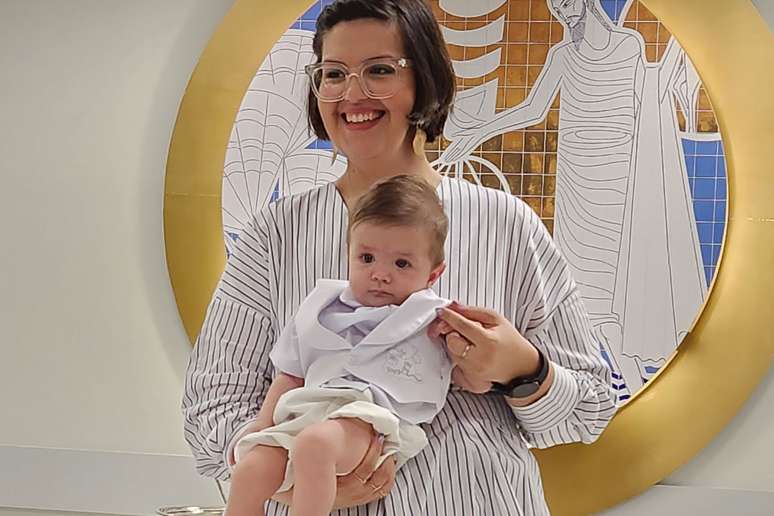On World Epilepsy Awareness Day, we spoke to Tainá Goulart, who discovered pregnancy after being diagnosed with the disease
You’ve heard of it “Purple Day”? OR “Purple Day”in Portuguese, it is the name given to the established date March 26 for the Epilepsy awarenessa time when different countries promote actions for discuss and highlight the problems related to the disease, making information about it more and more widespread.
html[data-range=”xlarge”] figure image img.img-fab5cf59787cf0c67e25e0b2cafc0574avyl4t0w { width: 774px; height: 516px; }HTML[data-range=”large”] figure image img.img-fab5cf59787cf0c67e25e0b2cafc0574avyl4t0w { width: 548px; height: 365px; }HTML[data-range=”small”] image figure img.img-fab5cf59787cf0c67e25e0b2cafc0574avyl4t0w, html[data-range=”medium”] figure image img.img-fab5cf59787cf0c67e25e0b2cafc0574avyl4t0w { width: 564px; height: 376px; }
The idea is also to demystify a health condition that still raises questions, including the possibility of pregnancy – After all, can a woman with epilepsy get pregnant? The answer is yeshowever, follow-up by a neurologist and obstetrician is essential.
What is epilepsy
Epilepsy is a change that occurs temporarily, lasting seconds or minutes, in the functioning of the brain.. The seizure can be partial, if it is localized, or generalized, if it affects both cerebral hemispheres. Contrary to what many believe, the epileptic seizure is not synonymous with epilepsy, but can be a consequence, with tremors, salivation and other signs (the so-called tonic-clonic crisis) – although this is not its only form of manifestation.
Once the problem has been identified, it needs to be treated and the role of anticonvulsant drugs (sometimes combined with other drugs, such as anxiolytics) is fundamental. The point is that the treatment cannot be stopped, even during pregnancy. By the way, the risk of an attack during pregnancy can have serious consequences.
“We must know that a seizure does not necessarily present itself in a classic way (tonic-clonic), it can only be an absence seizure, with loss of consciousness, for example. The point is that the Crises in pregnancy can lead to bleeding, intrauterine growth restriction, placental abruption, premature birth, and even maternal or fetal death.“, explains Monique Novacek, gynecologist, obstetrician and mastologist at Clínica Mantelli.
That is, maintaining treatment for epilepsy is indisputable, but planning your pregnancy can give you greater peace of mind. “A preconception consultation with both your obstetrician and neurologist is important,” advises your doctor.
Pregnancy with epilepsy
We know that, in real life, the script doesn’t always go as planned. This is what happened Tainá Goulart, a 32-year-old journalist, learned of her pregnancy after she was diagnosed with epilepsy. During the first year with the disease, which she believes was triggered by very high stress, she had 13 seizures as the neurologist treating her at the time tried to adjust the dose of the drug. During that time, he had several injuries from the seizures: five stitches on his head, two bone injuries in his shoulder, “aside from the bruises and all that questioning from the people around him,” he recalls.
However, by the time she found out there was a baby on the way, Tainá had already found the ideal neurologist for her and had stabilized her epilepsy for two years. “The pregnancy was unplanned, but it was only after the first scare that I remembered later that I would need to talk to my neurologist,” she says. The specialist got past security and declared it the drugs were the safest available. In consultation with the obstetrician, she was told that, yes, side effects of medications are known to exist, but discontinuation would not be an option.

Another concern was the possibility that the baby would be born with epilepsy. Although the disease may be congenital (be in the person’s genes, as in the case of Tainá), it is not hereditary. That is, the chance he had of being born epileptic was the same as any child born to parents without the disease.
The journalist recalls that the pregnancy went normally: “I continued to take the drug and did the standard follow-up of any pregnant woman”. Monique Novacek explains that, in fact, the exams are the same. “That includes first trimester morphology ultrasound, which should be done at 11 to 14 weeks, and second trimester, which should be done at 20 to 24 weeks.” At the time of the baby’s birth, unless there is some other health condition, there is no indication for a C-section.
Learn to slow down life
Tainá says she had a regular pregnancy and Francisco was born full-term on October 26, 2022. Despite wanting a vaginal birth, the baby was born at 38 weeks and 5 days by caesarean section. “There was a risk of ending up having to do an emergency caesarean and, since there was still a lot of dilation, we thought it best not to wait any longer,” he recalls.
The only specific epilepsy-related guidance she received was where she would give birth. “What my neurologist recommended was choose a hospital with an adult intensive care unit and a neurologist who can assist me in an emergency” – this is because there are maternity hospitals with only NICU, for example, or hospitals without this specialist for emergency care.
Fortunately there were no complications. Francisco, however, was born with meconium in his placenta and ingested amniotic fluid, which forced him to spend two weeks in the NICU. In the new phase, at home, the support network was – and continues to be – fundamental. “One observation the doctor made was, ‘After he’s born, you can’t go without sleep,'” he stresses, as sleep deprivation is one of the triggers for seizures. Tainá, who experiences motherhood alone, has ended up rethinking her lifestyle in general and moved out of the city to a less busy life and with the unwavering support of his mother, Laura.

“Taking it slow turned out to be the big point of my whole life. Everything has always been very hectic, frenetic, and epilepsy proved it to me”, reflects the journalist, who today carries the banner of the importance of treating the disease as something that can be part of life, and uses her Instagram profile ( @tainagoulart) to talk about their own experience. ” We have to deal with the matter normallyalso because the chances that cases will increase are great, since we do not take care of what should be the most important thing, our mental health “, he draws attention.
Tainá says that, currently, her main fear in relation to epilepsy is related to her son. “My biggest fear is having a seizure with Francisco on my lap”, He says. “I know that, in the future, the time will come to tell him that I am epileptic, but I am already thinking about how to do it in a natural way. Always saying things like: ‘Mom has to be careful, she needs to sleep … .’, and take this opportunity to teach good things, because I know I will lead by example. I have this condition, so what is the way to use it to transform his life for the good?” he concludes.
If you have a crisis during pregnancy, go to the hospital immediately
Finally, Monique Novacek warns of the extreme importance of doing prenatal care correctly, as in any pregnancy, following the integration indicated by the obstetrician, such as the active form of folic acid, to avoid malformations of the baby’s neural tube, and following under the supervision of a neurologist.
“Also, we can never rule out the possibility of eclampsia in a pregnant woman having a seizure. If an attack occurs, the woman should be taken to hospital immediately for the observation of maternal-fetal well-being, with assessment of the child, maternal monitoring, blood pressure control, among others”, concludes the obstetrician and gynecologist.
Source: Terra
Ben Stock is a lifestyle journalist and author at Gossipify. He writes about topics such as health, wellness, travel, food and home decor. He provides practical advice and inspiration to improve well-being, keeps readers up to date with latest lifestyle news and trends, known for his engaging writing style, in-depth analysis and unique perspectives.








